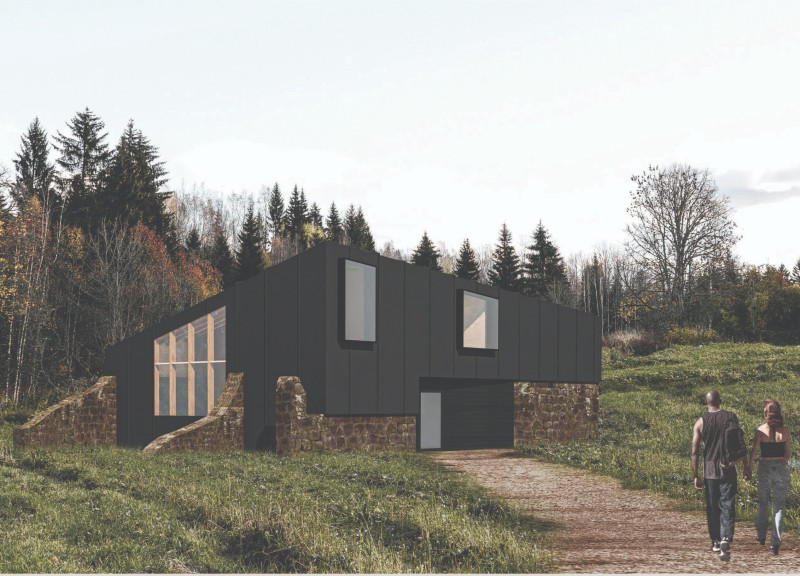5 key facts about this project
At its core, this project represents a response to the growing need for sustainable tourism practices that honor and utilize the unique character of a site. The architects have meticulously crafted a building that resonates with the historical context of the area while infusing contemporary design principles. This blend of old and new allows the structure to honor its origins, preserving the essence of the original barn that once occupied the site. By repurposing existing materials, such as the locally sourced stone, the project fosters a sense of continuity and respect for the past.
The design incorporates distinct architectural features that enhance its functionality and aesthetic appeal. The expansive rooflines and angular forms evoke traditional rural buildings, while large windows invite natural light and frame picturesque views of the surrounding landscape. These elements create a dialogue between indoor and outdoor spaces, enriching the experience for guests. The ground floor is characterized by open communal areas that encourage social engagement, featuring workshop spaces that celebrate local crafts. This design choice not only serves practical purposes but also nurtures a sense of community among visitors, inviting interactions that may extend beyond mere occupancy.
On the upper level, the guest accommodations are designed with a focus on privacy and comfort. Individual rooms offer a retreat-like atmosphere, allowing occupants to enjoy a tranquil experience that contrasts with the bustling communal areas below. Each guestroom is carefully designed to maintain connections to nature, employing large windows that provide scenic views while allowing ample sunlight to permeate the space. This architectural thought process ensures that the building is not solely a functional structure but a contemplative environment that enhances the guests' overall experience.
One of the standout aspects of the Regeneration project is its commitment to employing sustainable practices through thoughtful material selection. The use of black tin sheets for roofing is intentional, drawing upon traditional building techniques that prioritize practicality and durability. This material choice supports the building’s longevity while aligning with the regional aesthetic. Additionally, the choice of wood sourced from local species speaks to an eco-conscious approach which not only reduces the carbon footprint associated with transportation but integrates seamlessly into the natural context of the site.
The architectural layout further exemplifies an innovative design approach that aligns with principles of sustainability and community interaction. The building successfully blurs the lines between communal and private spaces, allowing for a rich interplay of experiences. This architectural strategy enhances the overall functionality, creating areas that foster engagement while retaining peaceful retreats for personal reflection.
Exploring this project further reveals the intricate architectural plans and sections that outline the meticulous thought behind the spatial organization. The architectural designs showcase how the interplay of form, materiality, and function culminates in a coherent narrative—an architecture that respects local traditions and environment while embracing modernity. As you delve into the project presentation, consider examining the architectural ideas and specifications that highlight the unique strategies employed in bringing this vision to fruition. The Regeneration project stands as an exemplary model for future architectural endeavors, effectively marrying ecological awareness with cultural sensitivity, inviting all to experience a new perspective on place and design.


























